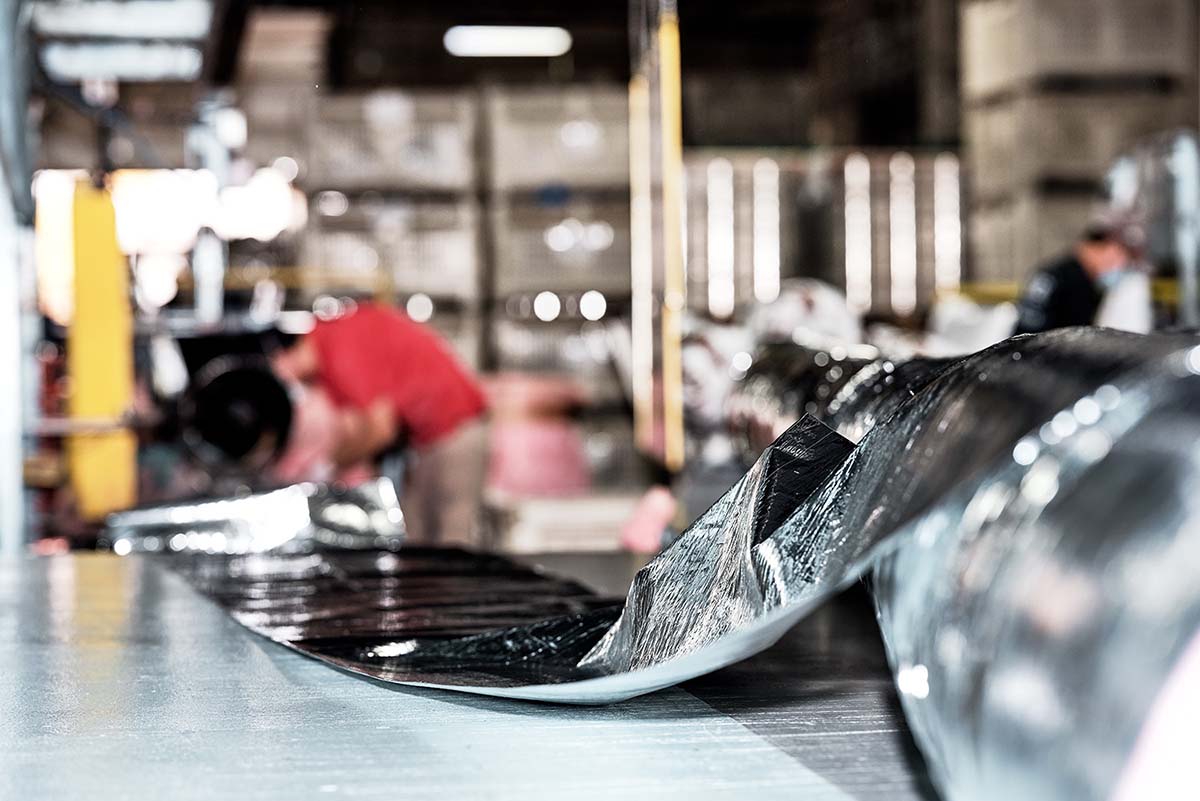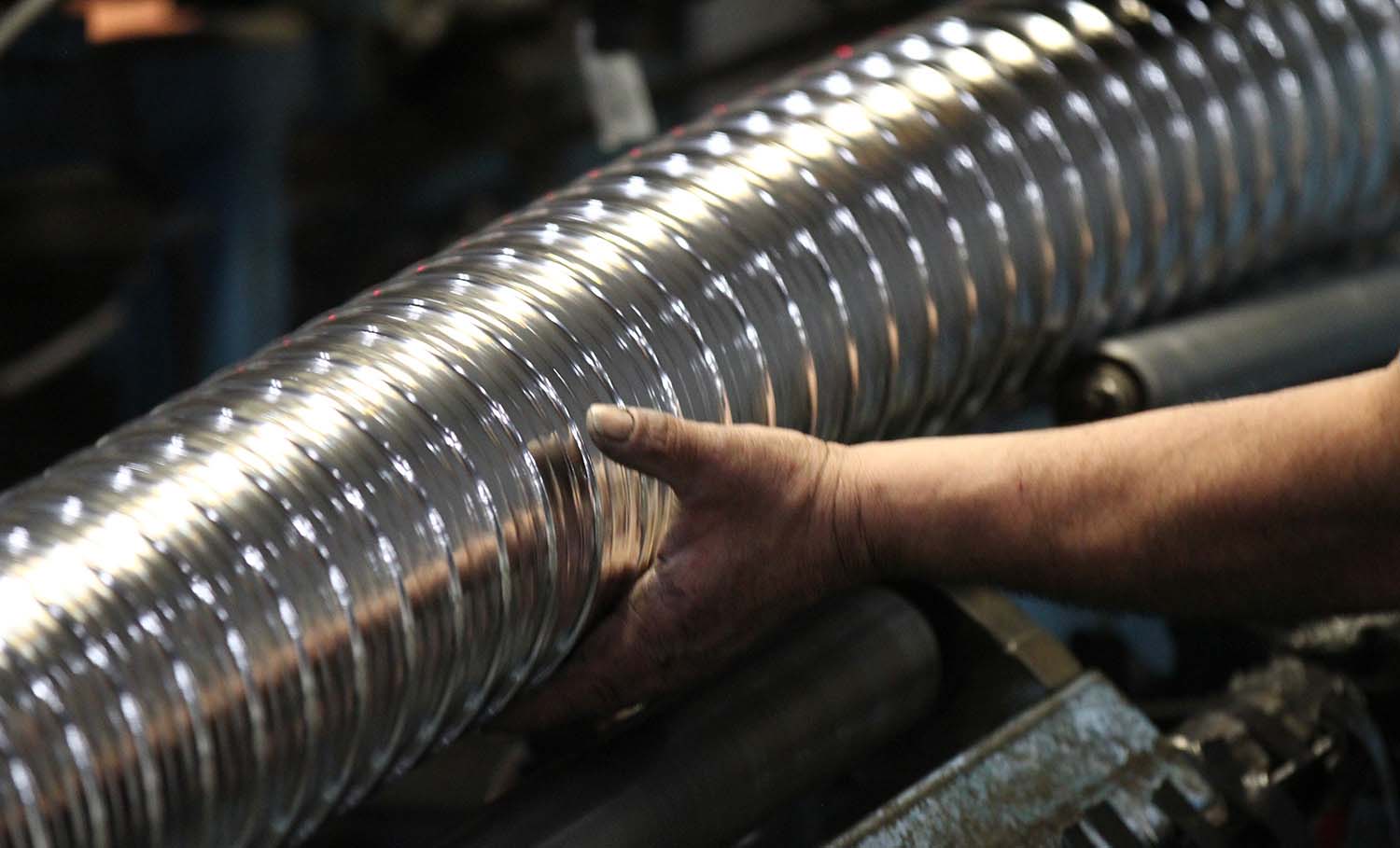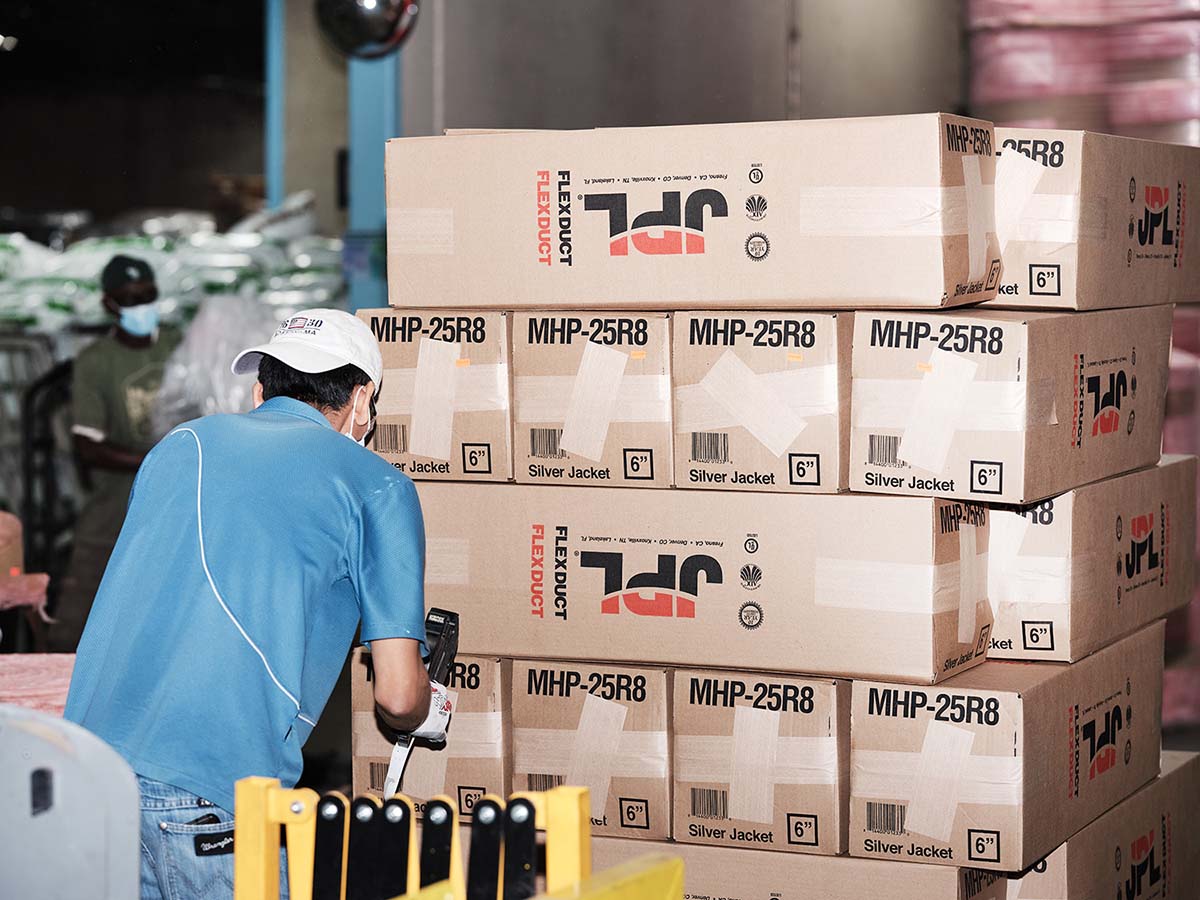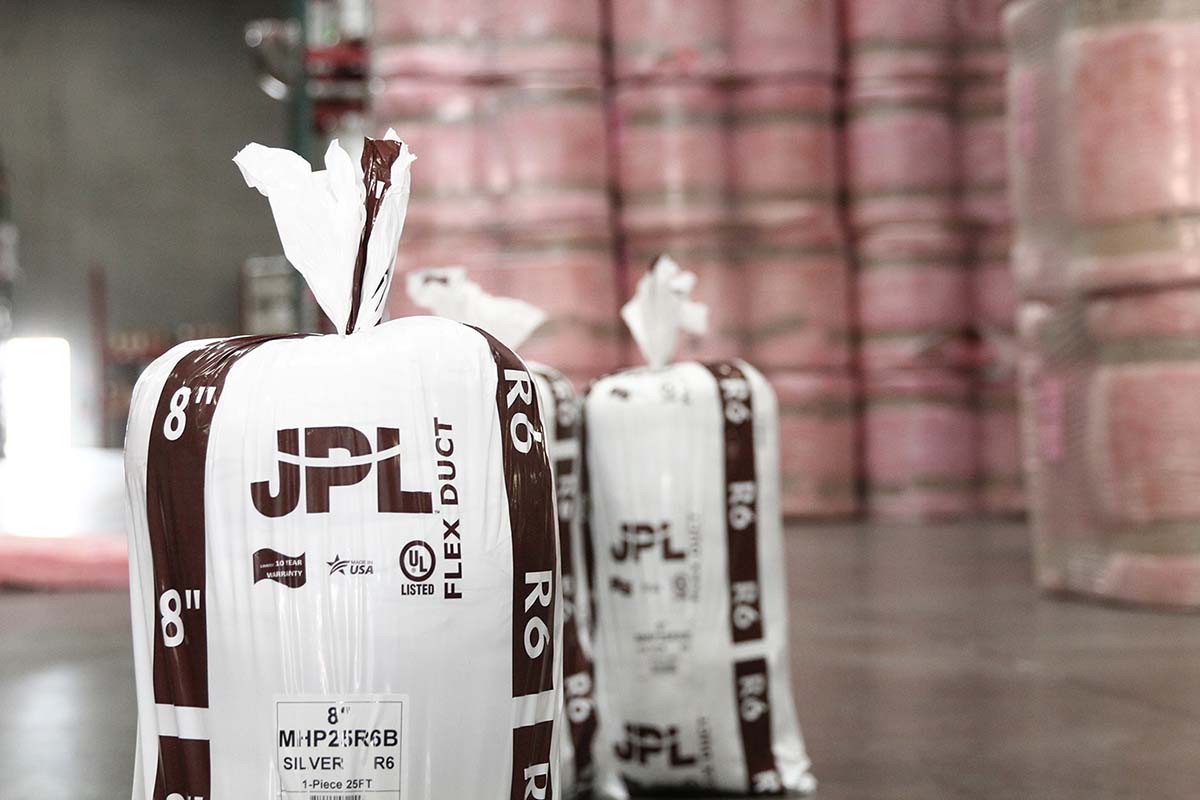✕
In David Monson’s region of New Hampshire, the Armstrong Duct, Vent, Hearth and Home operations lead says he often works on what he calls “Brady Bunch” houses – homes built in the ‘60s, ‘70s and early ‘80s. With their ageing HVAC systems, he says there’s “even odds” their flex duct is in a state of disrepair or dirty, bringing in continual business for the duct cleaner.
“It’s twofold. It’s age. Usually they’re in attics, so there’s exposure to excessive amounts of heat,” Monson said. “Then also, it’s early product in these homes, which isn’t as good as contemporary product.”
Monson replaces flex duct for his customers, when necessary, but will also refer customers to HVAC contractors for furnace changeouts and new duct systems. When his team inspects flex duct and find it’s in good health, they opt to clean it.
Flex duct manufacturers now regularly use fiber-laced and silver-coated jackets, which hold up much better than older materials. Silver coatings hold up well in the heat, whereas gray and black vinyl coatings get so hot, they run the risk of falling apart before the average lifespan of flex, which should generally last as long as, or outlive, your HVAC system, said Rhydon Atzenhoffer, territory sales manager at Insight Partners and host of the HVAC R&D podcast.

SILVER: Silver coatings hold up well in the heat, whereas gray and black vinyl coatings get so hot, they run the risk of falling apart, said Rhydon Atzenhoffer, territory sales manager at Insight Partners and host of the HVAC R&D podcast. (Photo courtesy of JPL)
“My dad was a contractor, so I grew up putting the stuff in my whole life. I know what it’s like to put in flex 30 years ago and I know what the stuff I’m selling now is like. It’s built and manufactured better than it was before,” Atzenhoffer said. “There were a lot of older duct materials that, in the attic’s heat, just fell apart over time.”
Manufacturers like JPL design an oversized inner core to easily slip over sheet metal boots, elbows and fittings. The six wire gauges used in the construction of the inner core assures a high bending radius and impact strength, along with guaranteed lengths out of the package.

INNER CORE: Manufacturers like JPL design an oversized inner core to easily slip over sheet metal boots, elbows and fittings. (Photo courtesy of JPL)
JPL has streamlined their manufacturing process across a national footprint of four factories now serving over 48 states and Puerto Rico. Atzenhoffer said in the past, he’s had boxes of 25-foot flex from other manufacturers that came up short or too long when stretched out fully per the SMACNA standard.
Cleaning Flex Duct
Flex duct is more sensitive than sheet metal ductwork to cleaning implements, but it’s not impossible to clean.
Contact vacuuming with a nylon brush and a HEPA filter can get the job done and it’s often the most ideal option, said Matt Mountain, ASCS, CVI, of the National Air Duct Cleaners Association and Mountain Duct Cleaning.

VACUUM: Contact vacuuming flex duct with a nylon brush and a HEPA filter can get the job done and it’s often the most ideal option. (Photo courtesy of JPL)
“We also have air-powered tools such as whip systems and brush systems that are either powered pneumatically or mechanically by a drill. Within those tool sets, there are different levels of agitation dependent on the types of whips or brush material used,” Mountain said, noting silica carbide brushes would damage flex duct, but that depending on condition, softer nylon brushes work well.
Mountain said if the condition of flex duct is debatable, he will pull a portion down and work on it separately, testing different tools to see what works. He said different regions of the country have varying rules on whether duct cleaners are allowed to replace flex duct themselves if it’s deemed unsalvageable. Monson added that insurance adjusters have varying criteria as well.
“Probably every other year, we get a call. Painters have not disposed of solvents-soaked rags properly and they catch on fire. It tends to be a nasty, smoky fire. And if I go into a situation like that, I’m very blunt with insurance people,” Monson said, explaining that he tells them the flex has a low likelihood of getting clean in that kind of situation.
“Different insurance adjusters are under different criteria. Some of them may be in a scenario where for their process, they must make the attempt and fail before they can authorize the next thing, other times they can just process the information and make a decision,” Monson said.
Dealing with Mold
Flex duct’s interior is coated with a layer of mineral oil during manufacturing, a food source for microbes absent on naturally antimicrobial steel.

MINERAL OIL: Flex duct is is coated with a layer of mineral oil during manufacturing. This is a food source for microbes, but if mold appears in flex, experts agree it is not the fault of the flex itself. (Photo courtesy of JPL)
“That’s why you’ll find what appears to be mold spotting in flex duct and nothing in the sheet metal portions, sometimes,” Monson said.
Atzenhoffer, Mountain and Monson agreed that if there is mold in flex duct, it is a symptom of a humidity problem, and not a fault of the flex duct itself. Atzenhoffer said that JPL has a 10-year warranty on all the flex duct they manufacture, along with GreenGuard Gold and UL Certifications. He has never had a warranty claim from one of his customers. He noted while HVAC equipment has had “10 years” of price increases in just the last few years, flex duct has held firm with more modest prices increases.
“If it’s bare metal, and it’s insulated on the outside, that’s probably in most cases your lowest likelihood of growing mold,” Atzenhoffer said. “But a lot of houses that have humidity issues, it comes down to: did the contractor that was initially doing the install, really do a proper load calculation and everything?”
“Flex duct should be installed according to SMACNA guidelines,” Monson added, referring to the Sheet Metal and Air Conditioning Contractors’ National Association and its duct assembly standards. “Flex duct needs to be stretched out tight so that it presents a smooth inner surface. And in most of the installations I see, you don’t see that, because you must take out a measuring tape, measure and cut. That takes effort.”
The flexible air duct trade association, the Air Duct Council (ADC), currently has the sixth edition of Flexible Duct Performance & Installation Standards freely available on its website. This “Green Book” gives installers guidelines for properly installing flex ducts.
Whenever an HVAC contractor uses a standard, 25-foot length spool of flex duct on a job that only requires 22 feet, the rest will show up as unnecessary turns that impede airflow, or in wrinkles that turn into ridges on the interior of the flex, creating pockets for microbial growth and difficult to clean crevices.
Monson called the worst case and least professional installations of flex duct “flex bombs.” In a furnace blow-back scenario covered by home insurance, Monson said even cleaning out 95% of the soot loss would still result in a tag, especially with poor installations.

INSURANCE: When assessing home insurance claims like a furnace blow-back, David Monson of Armstrong Duct, Vent, Hearth and Home said insurance adjusters are under varying requirements, sometimes allowing replacement of flex duct if necessary, other times requiring he try to clean it first. (Photo courtesy of JPL)
“Some people will automatically, with these insurance type restoration situations, jump to the conclusion that it’s better and cheaper to replace flex ducts than to clean them. In those scenarios, I offer to say you can observe, you can see the before and after results, and then decide if that’s not good enough for you. Then we can go to replacement,” Monson said, adding he puts pieces of filter media over every register to check his work during the last few days of clean up.
Homeowners are also a large source of mold, even on properly installed systems in good working order. Monson recalled a newer construction furnace blow back call he received, where he uncovered mold in a run of flex duct in a bedroom. The homeowners regularly opened a window below the duct as the HVAC system was running, bringing in humid air to the indoor environment. Insurance would not cover the replacement of that flex because it wasn’t part of the loss.
“Everybody obeys the laws of physics, whether they know them or agree with them or not. Humidity and temperature control are all a matter of physics,” Monson concluded. “You can’t have what you choose without having negative consequences sometimes.
Whether you require installation, repair, or maintenance, our technicians will assist you with top-quality service at any time of the day or night. Take comfort in knowing your indoor air quality is the best it can be with MOE heating & cooling services Ontario's solution for heating, air conditioning, and ventilation that’s cooler than the rest.
Contact us to schedule a visit. Our qualified team of technicians, are always ready to help you and guide you for heating and cooling issues. Weather you want to replace an old furnace or install a brand new air conditioner, we are here to help you. Our main office is at Kitchener but we can service most of Ontario's cities
Source link


Add Comment